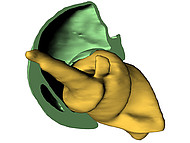

- Museum
- Back
- About us
- History of the Museum
- Organigramm
- Staff directory
- Tenders
- Schulpraktika BOGY/BORS
- Freunde des Naturkundemuseums
- Naturwissenschaftlicher Verein Karlsruhe
- Partner
- Adopting an object
- News
- Search
- Site notice
- Contact
- Datenschutz
- Exhibitions
- Education
- Research
- Back
- Research focus
- Gute Wiss. Praxis / ABS
- Publikationen
- Projects
- Geology, Mineralogy, Sedimentology
- Palaeontology and Evolution
- Botany
- Zoology
- Back
- Research
- Projects
- InBioVeritas
- Staff
- Publications
- Wissenswertes
- Back
- Artbeschreibungen
- Biodiversität
- Bodentiere
- Spinnentiere
- Webspinnen
- Kräuselweberinnen
- Nosferatu-Spinne
- Schlankkräusel-Spinnen
- Bananenspinnen
- Spinnseide
- Spinne des Jahres
- Spinne des Jahres 2018
- Spinne des Jahres 2019
- Spinne des Jahres 2020
- Spinne des Jahres 2021
- Spinne des Jahres 2022
- Die Wasserspinne
- Spinnen der Welt
- Heldbock
- Search
- Site notice
- Contact
- Datenschutz
- Mitarbeit
- Service
- Search
- Site notice
- Contact
- Datenschutz
- Entomology
- News
- Search
- Site notice
- Contact
- Datenschutz
- Collections
- Information
- Search
- Site notice
- Contact
- Datenschutz

Copyright 2020 Staatliches Museum für Naturkunde Karlsruhe0721/175 2111



